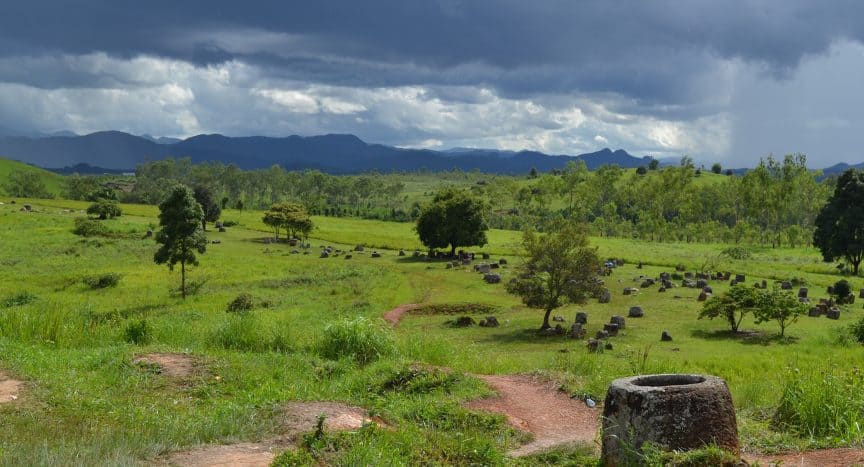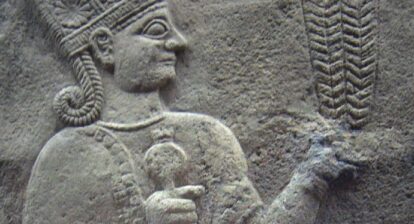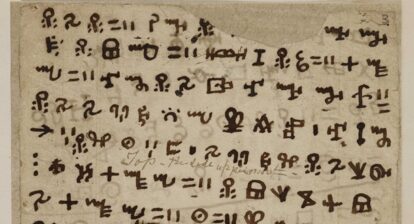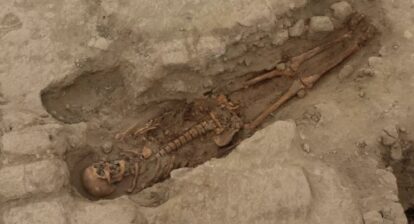Around the upland valleys and the lower foothills of the central plain of the Xiangkhoang Plateau, in Laos, the only landlocked country in Southeast Asia lies a field of ancient stone jars, known as the Plain of Jars. It is one of the most important prehistoric sites in South Asia. There are thousands of them arranged in clusters from one to several hundred. Most of them are open but some also have lids, varying in size from one metre to three metres, some estimated to weight up to 30 tonnes. Over 90 jar sites have been identified in Xiangkhouang Province, each one with one to 400 stone jars. Interestingly, almost all of the jars are without decoration except one, which has a human “frogman” bas-relief carved on its exterior.
Their original purpose is still unknown and archaeologists have speculated that they were meant for burial practices in prehistoric times. Meanwhile, local lore suggests that they were used for storing food, alcohol and rainwater.
It has been difficult to date when the stone jars were put in place because the location is full of millions of unexploded bombs dropped by the US Air Force during World War II and then again between 1964 to 1973. This has posed extensive danger to the local populations (about 300 Laotians are killed or injured annually), as well as making the Plain of Jars all but inaccessable. In fact, the remnants of the bombs are so abundant on the Plain of Jars that collection and sale of scrap metal from bombs has been a major industry since the Civil War.
Research in selected safe locations (less than 10% of the area has been cleared) has begun recently with the result that a new study using a technique called Optically Stimulated Luminescence (OSL) to date the ancient stone reveals that the jars were put in place between 1240 to 660 BCE. Furthermore, radiocarbon dating of skeletal remains and charcoal samples shows that mortuary practices were taking place around the jars from the 9-13th century AD.
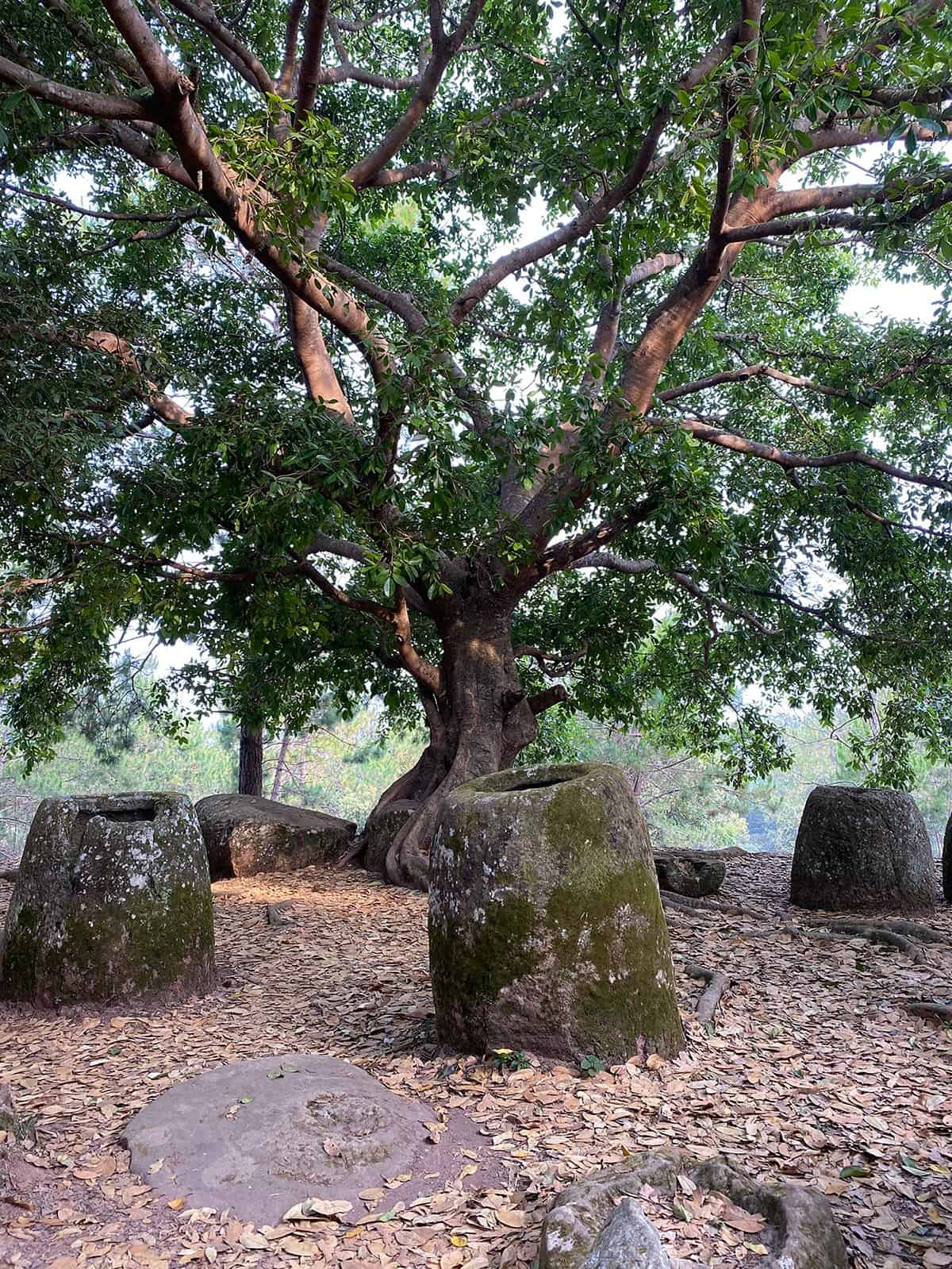
Plain of Jars Site 2. Image: Shewan L, O’Reilly D, Armstrong R, Toms P, Webb J, Beavan N, et al. (2021)
So, the jars were placed a long time ago, and were subsequently used for for funerary and ritual purposes. However, it is still not clear what their orginal purpose was.
“The data presented here strongly suggests that the placement of the megaliths preceded the mortuary activity around the jars, indicating re-use of the sites and enduring ritual significance.” “Although the original purpose of the megalithic jars remains to be determined, the present research indicates a long history of activity at the sites”, write the researchers.
Furthermore, geochronological analysis using the age of detrital zircons demonstrates a likely quarry source to be 8 kilometres (5 miles) away from where the jars ended up, for one of the largest megalithic jar sites. But how this was done is yet to be determined.
The researchers hope that further excavations and studies will provide more insights into one of Southeast Asia’s most mysterious archaeological sites and reveal more about the culture that created it. The Plain of Jars has recently been designated a UNESCO World Heritage Site.
(Check out Saudi Arabia’s Ancient Stone Structures)
The selected Optin Cat form doesn't exist.
